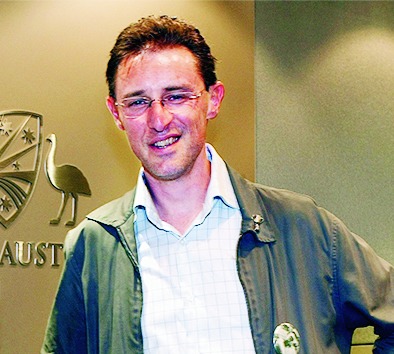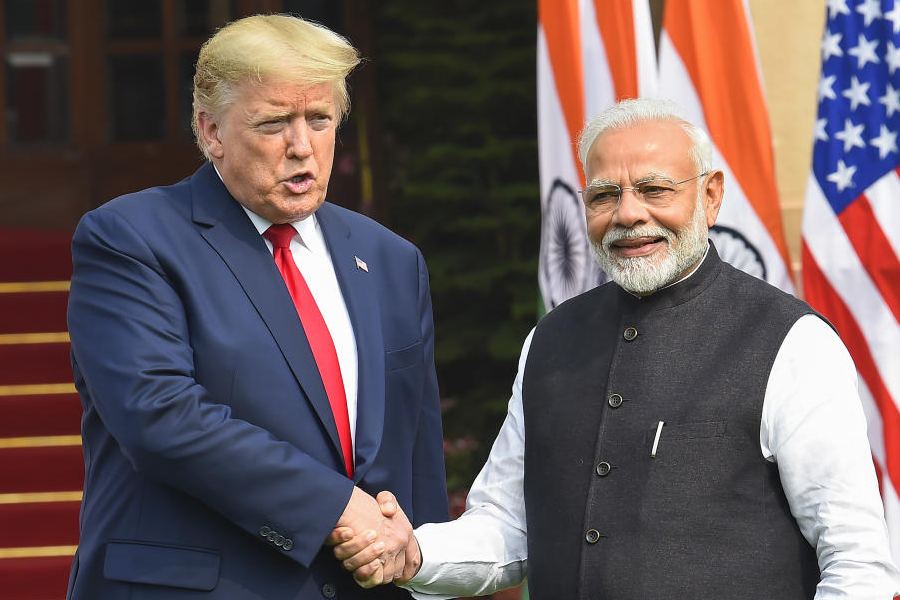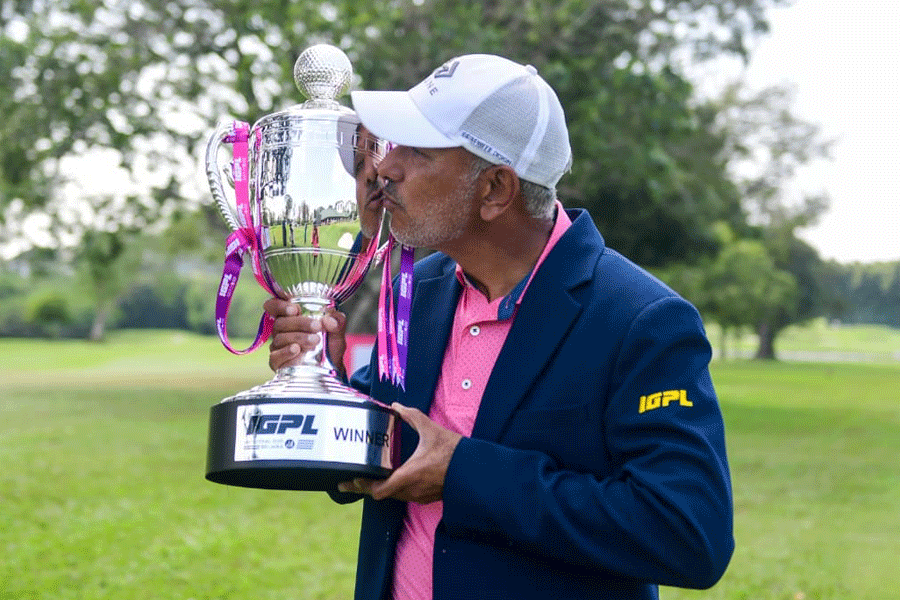 |
In many ways the aftermath of the elections in Maharashtra and Haryana was a case of the dog that didn’t bark. Imagine, for the sake of argument, that the assembly elections in the two states had been held at the beginning of the year, before the general elections. The favourable outcome for the Bharatiya Janata Party would have witnessed a frenetic round of breast-beating. Concerned notables would have been eloquent in expressing their dismay at the communalization of Indian politics and the consequent marginalization of the so-called secular parties. Tears would have been shed over the apparent decimation of the Idea of India. Analysts would, in particular, have been disturbed by the fact that even the internal schisms of the ‘Hindu Right’ hadn’t prevented the Bharatiya Janata Party and the Shiv Sena — both pro-Hindutva parties — from occupying first and second place and securing a combined total of 48.5 per cent of the popular vote in Maharashtra, India’s second largest state after Uttar Pradesh.
Instead, what we witnessed were run-of-the-mill discussions in the TV studios, some quiet gloating of the anti-Narendra-Modi media that an outright majority eluded the BJP in Maharashtra and some genuine anguish over the uninterrupted decline of the Congress. What was significantly missing was the hoary secular-communal discourse that had dominated the airwaves only a few months earlier.
Indeed, even the feeblest attempts to invoke the threats to an earlier secular consensus were punctured by the alacrity with which Sharad Pawar’s Nationalist Congress Party offered unconditional support to the BJP, even before all the results were in. Maybe the offer was akin to an anticipatory bail application, but what was significant was that the apparent communal credentials of the BJP weren’t a deterrent. The secular cause was further muddied when the NCP let it be known that the Congress had mooted a proposal for the erstwhile United Progressive Alliance partners to support a minority Shiv Sena government from the outside.
Conventional alarmist wisdom had deemed that the victory of the BJP in May 2014 and the installation of Modi as prime minister would have a devastating effect on the ‘secular fabric’ of India. Going by this caricatured perception, there would be a thrust towards making India culturally monochromatic. The merchants of fear deemed that there would be a drive towards making Hindi-speaking obligatory and vegetarianism compulsory. By implication it was suggested that all minorities would be under threat and that Muslims would become increasingly beleaguered and hemmed into ghettos.
I am not exaggerating. You just have to read the petitions expressing fears of a Modi raj signed by worried Guardian and New York Times-reading Indians resident overseas that surfaced just prior to the voting in the general elections to realize that some people had psyched themselves into believing that a Modi sarkar equalled Indian fascism.
It is not that the immediate aftermath of the election didn’t witness any inter-community tension. Western Uttar Pradesh, which is fast becoming a communal tinderbox, witnessed communal riots of middling and low intensity. There was a lot of fuss over alleged love jihad campaigns involving Muslim boys ensnaring Hindu girls into relationships and subsequent conversions to Islam. Some BJP hotheads, looking for shortcuts to popularity, even chose to persuade national leaders into making love jihad the main subject of street politics in Uttar Pradesh. In Gujarat, after more than a decade of peace, Vadodara witnessed Hindu-Muslim clashes during Navratri, courtesy some inflammatory messages circulated over WhatsApp. And, in Srinagar, there was the unseemly sight of a group of habitual protesters flashing the flag of the notorious ISIS of Iraq and Syria.
The most serious incidents that have the potential of creating new and dangerous sectarian complications have occurred in West Bengal. Ostensibly, the bomb factory in Bardhaman that was unearthed after a series of accidental blasts centre on a threat to national security and relations with neighbouring Bangladesh. However, the wilful underplaying of the threat posed by Islamist extremists targeting the Awami League government and the suggestion that Bangladeshi networks were involved in money laundering operations in West Bengal have put the state government in the dock. The belligerent defensiveness of the chief minister, Mamata Banerjee, and her cynical relationship with an extremist fringe have, in effect, contributed to an already growing communal divide in the state. However, the factors that have contributed to the new schisms are located within the state and the wider neighbourhood. There is no suggestion that the Modi government has played a divisive role.
The larger theme that emerges five months after Modi assumed charge in Delhi is that the priorities of both the government and the populace are not on issues of identity. Since becoming prime minister, Modi has undertaken many new and extremely ambitious programmes. The rationale behind the initiatives is the larger economic regeneration of India and improving the quality of life of its people. Whether it is the ‘Make in India’ initiative, the Ganga cleaning programme and the Swachh Bharat crusade, the appeal cuts across regional, caste and religious divides. This is in synch with the BJP’s attempt to create a new support base that is based on aspiration, energy and a negation of old-style vote-bank politics.
It is true that most of these initiatives still have a long way to go. To that extent, the huge surge in BJP support is based on an endorsement of the direction of governance and leadership style rather than a verdict on performance. Yet, the mere fact that existing political alignments were dramatically altered in an assembly election, where local factors and identity matter far more than they do in Lok Sabha elections, suggest a yearning for what appears to be purposeful governance and clear decision-making.
Those who judged (and still judge) by his inability to prevent the riots in Gujarat assuming horrible proportions believe that communal polarization is at the heart of Modi’s politics. They would attach huge importance, for example, to the prime minister not hosting an iftaar in Race Course, quite forgetting that he didn’t bother with a Diwali party either. Likewise, the fact that Modi didn’t roundly denounce some of the more extreme utterances of Yogi Adityanath, now the presiding swami of the Gorakhnath temple, has attracted unfavourable comment. But this strategic silence was offset by his most public repudiation of communal polarization: his call for a 10-year moratorium on divisive issues in his Independence Day speech from Red Fort.
The truth that many of Modi’s critics have been slow to grasp is that, unlike conventional politicians, the prime minister is very picky with his public symbolism. The usual Amar-Akbar-Antony symbolism preferred by Bollywood has given way to something that is less contrived and, more important, modern. Modi the prime minister has chosen to be markedly different from Modi the indefatigable election campaigner. The style is still evolving and it would be premature to attempt a rigid definition of the new style. All that can be said with a measure of certainty is that Modi is loath to woo India’s religious minorities on the basis of their faith. He will court Aamir Khan for his Swachh Bharat campaign not because he needs a token Muslim face but because the actor’s larger profile fits the role of a promoter of a social cause. Modi may not be a secularist in the same way as Jawaharlal Nehru was, but he is disinclined to practice either tokenism or religious politics.
The deafening silence surrounding the secular-communal divide is among the most positive consequences of last week’s assembly polls. Modi’s critics must find a new stick to beat him with. The old one has been blunted.










